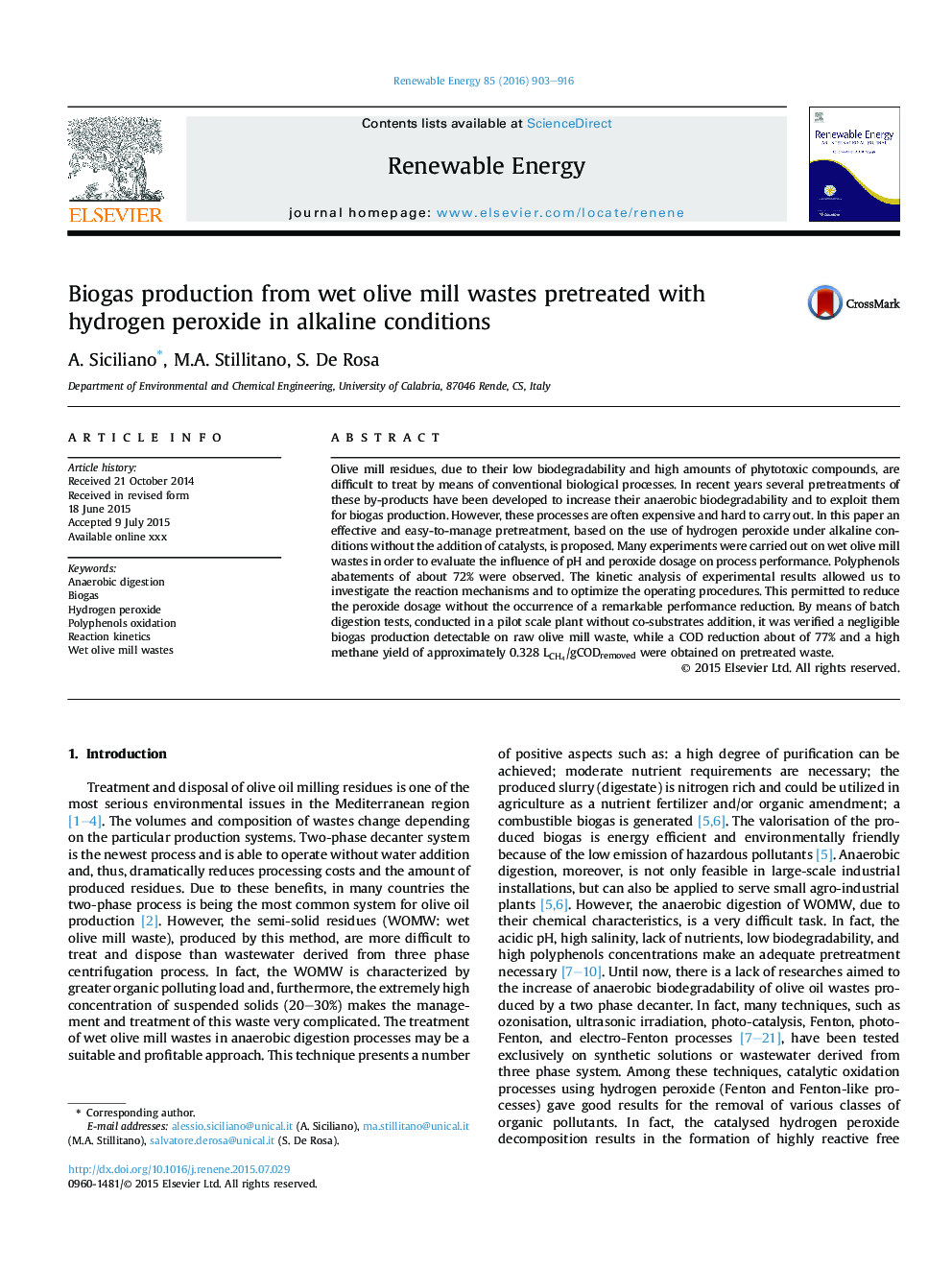| Article ID | Journal | Published Year | Pages | File Type |
|---|---|---|---|---|
| 6766964 | Renewable Energy | 2016 | 14 Pages |
Abstract
Olive mill residues, due to their low biodegradability and high amounts of phytotoxic compounds, are difficult to treat by means of conventional biological processes. In recent years several pretreatments of these by-products have been developed to increase their anaerobic biodegradability and to exploit them for biogas production. However, these processes are often expensive and hard to carry out. In this paper an effective and easy-to-manage pretreatment, based on the use of hydrogen peroxide under alkaline conditions without the addition of catalysts, is proposed. Many experiments were carried out on wet olive mill wastes in order to evaluate the influence of pH and peroxide dosage on process performance. Polyphenols abatements of about 72% were observed. The kinetic analysis of experimental results allowed us to investigate the reaction mechanisms and to optimize the operating procedures. This permitted to reduce the peroxide dosage without the occurrence of a remarkable performance reduction. By means of batch digestion tests, conducted in a pilot scale plant without co-substrates addition, it was verified a negligible biogas production detectable on raw olive mill waste, while a COD reduction about of 77% and a high methane yield of approximately 0.328Â LCH4/gCODremoved were obtained on pretreated waste.
Related Topics
Physical Sciences and Engineering
Energy
Renewable Energy, Sustainability and the Environment
Authors
A. Siciliano, M.A. Stillitano, S. De Rosa,
